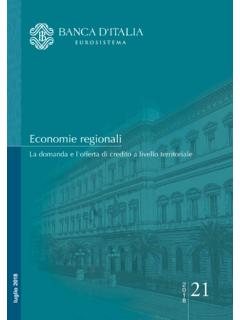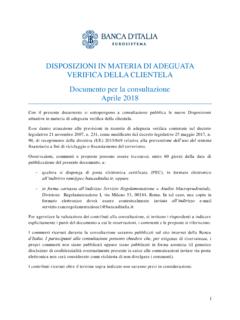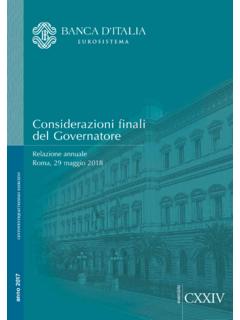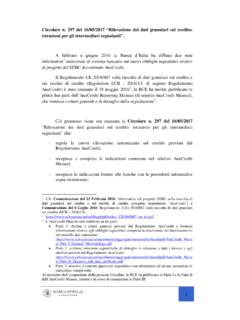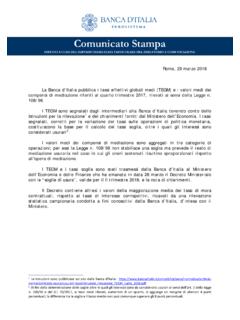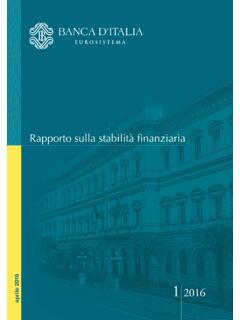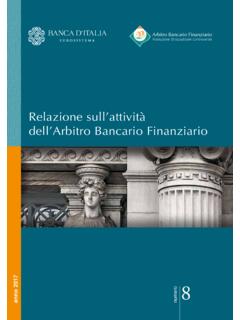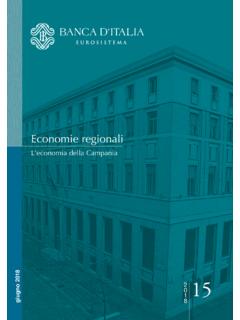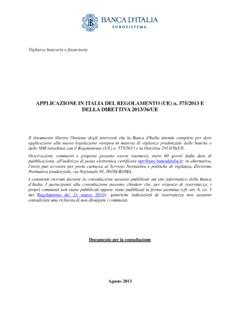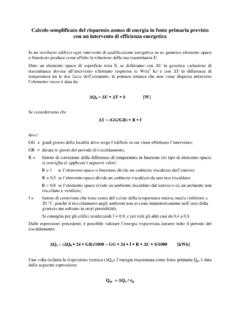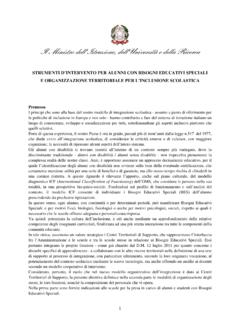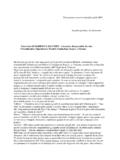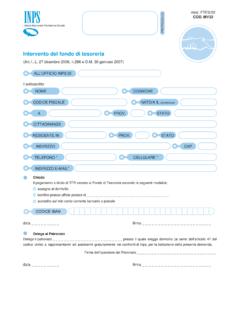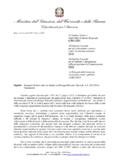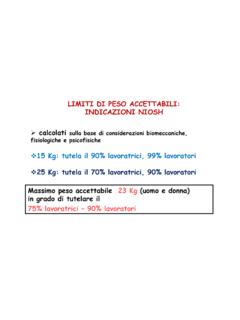Transcription of Panel Discussion: “The Real Effects of Disrupted Credit ...
1 Panel Discussion: The Real Effects of Disrupted Credit :Evidence from the Global Financial Crisis Per Jacobsson Lecture by Ben S. Bernanke BIS, Sunday, 24 June 2018 Remarks by Ignazio Visco, Governor, Bank of ItalyI am very pleased to be here today to discuss the economic Effects of Credit crunches with such a distinguished group of colleagues and friends following Ben Bernanke s insightful time is ripe to draw some policy lessons about the exceptional wave of turbulence that has hit Credit markets in the last decade. I shall do so from a European angle. The European banking system has endured two major crises in the past decade: the Global Financial Crisis (GFC) and the Sovereign Debt Crisis (SDC).
2 The former was mostly imported from the United States and it hit European banks through their exposure to toxic assets and the freeze of wholesale funding markets. The latter originated within the euro area and was due to a loss of confidence in the sustainability of public debts and, ultimately, to the risk of a break-up of the monetary my remarks I will focus on the negative side of Ben s financial accelerator, that is, on the fact that in stressed periods banks may not be able to supply loans to businesses and consumers and this may aggravate the economic fall-out from the crisis, triggering a downward negative spiral between Credit availability and domestic I would like to make six main points.
3 * * *I wish to thank Margherita Bottero, Lorenzo Burlon and Giuseppe Grande for their help in assembling the evidence discussed in this See Ben s work on non-monetary Effects in the propagation of the Great Depression (Bernanke, 1983).21. Credit crunches do matter and may arise in many contextsThe first lesson is that Credit crunches do matter and that they may arise in many supply reacts negatively to adverse shocks generated in the real or the financial sector, amplifying the decrease in real activity; the ensuing contraction in Credit demand and the deterioration in Credit quality puts further pressure on banks balance sheets and reinforces financial strains, creating a vicious circle.
4 The experience of the euro area since 2007 offers a painful vantage point from which to appreciate the extent of this downward loop, which partly explained the fall in GDP during both the GFC and the GFC spread over Europe in two forms: a real shock, due to the collapse of world trade and the surge in uncertainty, and a purely financial shock, via exposure to toxic assets and the freeze of wholesale bank funding markets. Both channels affected bank lending standards in the euro area (Figure 1). During the GFC most of the tightening of Credit conditions was connected with banks assessment of borrowers Credit risk, probably owing to the real shock.
5 However, another factor was banks greater funding costs and other balance sheet constraints. The case of Italy is enlightening. First, since the worse international outlook accounted for roughly three quarters of Italy s economic slump, the contraction in Credit lines to firms came mainly from the deterioration in borrowers Second, Italy s financial institutions were not exposed to toxic assets, so balance sheet constraints were less of an issue than in the rest of the euro area. Yet, financial shocks did matter, too: as bank surveys also signalled, the GFC caused a freeze in the interbank market that weakened banks funding conditions, leading to a contraction in Credit lines to The consequent worsening of firms financing opportunities discouraged their investment plans, thus affecting Credit demand and activating the financial accelerator.
6 The Bank of Italy s estimates put the reduction in investment expenditure by firms in Italy due exclusively to this channel at over 20%.42 For a quantitative assessment of the macroeconomic impact of the GFC on Italy, see Caivano, Rodano, Siviero (2010).3 Gaiotti (2013).4 Cingano, Manaresi, Sette (2016). 23 Compared with the GFC, the SDC was triggered by different shocks. It stemmed from growing concerns about country-specific structural weaknesses, aggravated by the recent GFC, and became systemic because of growing concerns about the solidity of the monetary union, which led financial market participants to price in redenomination risk.
7 The increase in sovereign spreads worsened funding conditions for all domestic borrowers, from banks to non-financial corporations and households. Following, moreover, the increase in uncertainty, the loss of confidence and the necessary fiscal consolidation as well, consumption and investment This re-activated the financial Unlike the GFC, the tightening of banks lending standards was to a larger extent due to the deterioration in their funding conditions rather than to the rise in borrowers Credit The nexus between the solvency of banks and that of the domestic sovereign goes beyond banks mere holdings of government bonds This leads me to the second lesson, which concerns the sovereign-banks nexus.
8 In a sovereign debt crisis the holdings of government bonds backfire directly onto banks valuations, but there are other indirect channels that characterize the two-way relationship between banks and cursory look at banks balance sheets reveals that up to the failure of Lehman Brothers in September 2008 euro-area banks had been steadily reducing their holdings of government That share then increased during the prolonged period of financial instability running from late 2008 to early 2013. Since then, in most euro-area countries banks government bond holdings have edged down again. Thus, the increase in banks holdings of government bonds during the crisis was mainly a consequence, rather than a cause, of the crisis (Figure 2).
9 The SDC worsened the general macroeconomic outlook and this put banks under severe strain. For this reason, as I have pointed out in the past, the nexus 5 For the impact of sovereign risk on banks funding conditions, see CGFS (2011). For the Effects of the SDC on the Italian economy, see Busetti and Cova (2013).6 Rodano, Siviero, Visco (2013).7 See, , Angelini and Grande (2014).4between banks and sovereign goes beyond the direct holdings of sovereign Accordingly, it has to be tackled by reinforcing investors confidence in the solidity of the public finances, the growth prospects of the country and the stability of the banking an aside, I would say that the increase in banks sovereign exposure observed during the crisis should not necessarily be regarded as In the face of greater funding risks, banks need to hold more liquid assets.
10 Moreover, in stressed periods banks could have an incentive to act as shock absorbers or contrarian investors on the domestic government bond market for a number of reasons. Specifically, they may want to dampen unwarranted changes in government bond prices, as the latter feed through to the prices of all other domestic assets. Compared with foreign players, they may have a better understanding of political and economic developments in their own country. They know that they are closely intertwined with their sovereign through funding conditions, the macroeconomic environment and other indirect channels, so that if their sovereign runs into trouble, they will probably run into trouble as well, no matter how many domestic government bonds they The structure of the financial system does matterMy third point concerns the importance that firms rely upon a well-diversified system of funding sources.
